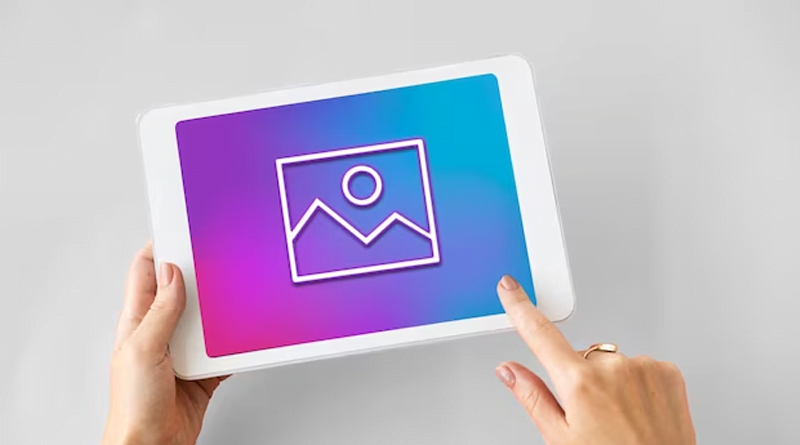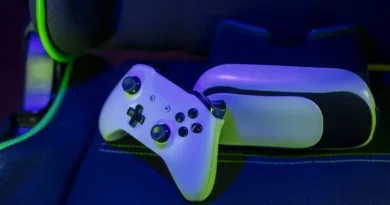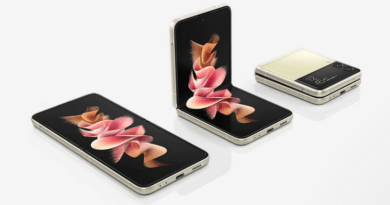Tablets for Every Lifestyle: Personalized Digital Bliss
Tablets are electronic devices that fall under the category of gadgets. They are portable computers with a flat, rectangular shape, a touch-sensitive screen, and a virtual keyboard for input. Tablets are designed to be lightweight and easy to carry, making them ideal for various tasks such as web browsing, reading e-books, watching videos, playing games, and running productivity applications.
Tablets typically use operating systems like Android, iOS (Apple), or Windows, and they offer a wide range of functionalities and features. They connect to the internet through Wi-Fi or cellular networks and often have front and rear-facing cameras for photography and video calls.
Over the years, tablets have become increasingly popular due to their versatility and convenience. They bridge the gap between smartphones and laptops, offering a more substantial screen for multimedia consumption and productivity tasks while maintaining portability. Hence, you may say that tablets are a type of gadget that provides a portable and user-friendly computing experience through touch-based interactions on a screen.
Tablet gadgets are in Gadget Fashion and being used by a diverse range of individuals and have found applications in various sectors.
Contents
- 1 The primary users of tablets include:
- 2 Advantages of Tablets:
- 3 Advantages of Mobile Phones:
- 4 Advantages of PCs (Desktop or Laptop):
- 5 How does a tablet gadget work?
- 6 Hardware Components:
- 7 Operating System (OS):
- 8 User Interface and Interaction:
- 9 The best tablet brands & Its Prices
- 9.0.1 Price Range: High-end iPads can start from around $799 to over $1,499, depending on the model and configuration.
- 9.0.2 Cheaper Options: Apple also offers more budget-friendly options like the iPad (base model), which can start at around $329.
- 9.0.3 Price Range: Samsung Galaxy Tab series prices can range from $199 to $1,299 or more, depending on the model and features.
- 9.0.4 Cheaper Options: Samsung offers various budget-friendly options, like the Galaxy Tab A series, which may start from around $149.
- 9.0.5 Price Range: Amazon’s Fire tablets are among the most budget-friendly options, starting from as low as $49.99 and going up to around $149 for higher-end models.
- 9.0.6 Price Range: Lenovo’s Tab series can start from around $99 to $699 or more, depending on the model and specifications.
- 9.0.7 Cheaper Options: Lenovo offers more affordable options like the Tab M series, which may start from around $99.
- 10 Price Range: Microsoft Surface tablets typically start from $799 to $2,499 or more for higher-end models.
- 10.0.1 Cheaper Options: Microsoft occasionally releases more affordable versions of its Surface devices, such as the Surface Go, starting from around $399.
- 10.0.2 Price Range: ASUS ZenPad tablets can start from around $99 to $599, depending on the model and features.
- 10.0.3 Cheaper Options: ASUS offers budget-friendly options like the ZenPad C series, which may start from around $99.
- 10.0.4 Price Range: Sony Xperia tablets may start from around $399 to $699 for their higher-end offerings.
- 10.0.5 Cheaper Options: Sony’s older or entry-level Xperia tablets could be found at lower price points.
- 11 FAQs:
The primary users of tablets include:
General Consumers: Tablets are popular among general consumers for personal use. People use tablets for activities such as web browsing, social media, watching videos, reading e-books, playing games, and managing emails.
Students: Many students use tablets for educational purposes. Tablets can serve as e-readers, digital notebooks, and platforms for accessing educational apps and online resources.
Professionals: Tablets are increasingly used by professionals in different industries. They can be utilized for tasks like note-taking, presentations, data analysis, and accessing business applications on the go.
Travelers: Tablets are convenient companions for travelers who want to stay connected, read books, watch movies, and manage their travel plans.
Artists and Creatives: Tablets with stylus support are popular among artists and designers. They use tablets for digital drawing, sketching, and graphic design work.
Medical Professionals: Tablets are used in healthcare settings for medical records, patient monitoring, and accessing medical information.
Children: Many educational tablets are designed specifically for young children to aid in early learning and development.
Senior Citizens: Tablets can be user-friendly tools for seniors to stay in touch with family, access useful apps, and engage in leisure activities.
Overall, tablets have a broad user base, and their popularity continues to grow as technology evolves and new use cases emerge.
Whether a tablet is better than a mobile phone or a PC depends on the specific needs and preferences of the user. Each device has its advantages and limitations, and the choice between them will vary based on how they will be used.
Advantages of Tablets:
Portability: Tablets are more portable than PCs, making them convenient for on-the-go use.
Touchscreen Interface: Tablets offer a user-friendly touch-based interface that some people find more intuitive than using a mouse and keyboard.
Long Battery Life: Tablets generally have longer battery life compared to laptops, allowing for extended use without the need for frequent charging.
Versatility: Tablets can be used for a wide range of tasks, from entertainment and browsing to productivity and creative work, making them versatile devices.
Advantages of Mobile Phones:
Ultimate Portability: Mobile phones are the most portable devices, easily fitting in pockets and always readily available.
Constant Connectivity: Mobile phones keep users connected to the internet and communication services at all times.
Integrated Features: Modern smartphones come with various features like high-quality cameras, GPS, and sensors that are not always present on tablets.
Phone Functions: Mobile phones, as the name suggests, are primarily designed for making calls and are more optimized for phone-related tasks.
Advantages of PCs (Desktop or Laptop):
Power and Performance: PCs generally offer more processing power and performance capabilities than tablets or smartphones.
Software Compatibility: PCs support a vast array of software and applications, many of which may not be available or as robust on tablets.
Multitasking: PCs are better suited for multitasking and handling resource-intensive tasks simultaneously.
Storage Options: PCs often provide more extensive storage options, including large hard drives and expandable storage.
Ultimately, the decision on whether a tablet is better than a mobile phone or PC depends on individual needs and usage patterns. Some users may prefer the portability and versatility of tablets for light computing tasks, while others may require the power and functionality of a full-fledged PC. Many people find that having a combination of devices, like a smartphone for communication on the go, a tablet for entertainment and light work, and a PC for heavy computing, best suits their needs. These are the 10 lines on the tablets.
How does a tablet gadget work?
A tablet gadget works through a combination of hardware and software components to provide a user-friendly and portable computing experience. Here’s an overview of how a tablet operates:
Hardware Components:
Processor (CPU): The central processing unit (CPU) is the brain of the tablet. It executes instructions and processes data to run various applications and tasks.
Memory (RAM): Random Access Memory (RAM) is used to store data temporarily while the tablet is running applications. It enables fast access to data for smooth multitasking.
Storage (Internal Memory): This is the tablet’s internal storage where the operating system, apps, and user data are stored.
Display: The tablet’s screen is a touch-sensitive display that allows users to interact with the device using gestures and touches.
Battery: Tablets are powered by built-in batteries that provide power for the device to operate without needing a constant connection to an external power source.
Sensors: Tablets come equipped with various sensors like accelerometers, gyroscopes, ambient light sensors, and proximity sensors. These sensors enable features such as screen rotation, auto-brightness adjustment, and proximity detection during calls.
Cameras: Tablets often have front and rear-facing cameras for taking photos, recording videos, and enabling video conferencing.
Operating System (OS):
Tablets run on operating systems such as Android (by Google), iOS (by Apple), or Windows (by Microsoft). The OS acts as the software platform that manages the tablet’s hardware, runs applications, and provides the user interface.
User Interface and Interaction:
The user interface is presented on the tablet’s touchscreen display. Users interact with the tablet by tapping, swiping, pinching, and using various touch gestures.
The operating system’s user interface includes app icons, a home screen, app drawer, and notification panel, which provide an intuitive way for users to access and manage applications and settings.
Connectivity:
Tablets can connect to the internet through Wi-Fi or cellular data networks (in the case of tablets with cellular capabilities).
They can also connect to other devices via Bluetooth for sharing data and connecting peripherals like keyboards or speakers.
Apps and Software:
Users can download and install applications (apps) from app stores provided by the tablet’s operating system. Apps can serve a wide range of purposes, from productivity and communication to entertainment and games.
Updates and Maintenance:
Like any computing device, tablets require regular updates to the operating system and installed apps to ensure security, stability, and performance improvements.
When you turn on a tablet, the operating system loads and you can access various apps and settings through the touchscreen interface. The tablet’s hardware and software work together to provide a seamless and interactive user experience for a variety of tasks and activities.

The best tablet brands & Its Prices
When considering the best tablet brand, it’s crucial to take into account individual needs, budgets, and preferences, as each brand offers different features, price ranges, and ecosystem integration. Tablet prices can vary based on specifications, storage capacity, screen size, and region. As of my information writing here general brand-wise details, and price range, starting from the more expensive options to the more budget-friendly ones.
As per my knowledge till July 2023, several brands have been known for producing high-quality tablets with advanced features and user-friendly interfaces. However, please note that the technology landscape is constantly evolving, and new brands may have emerged or gained prominence since then. Here are some of the best tablet brands that have been recognized globally:
Apple (iPad series): Apple’s iPad has been one of the most popular and iconic tablet lines since its introduction in 2010. iPads are known for their premium build quality, smooth performance, and extensive app ecosystem through the Apple App Store.
Price Range: High-end iPads can start from around $799 to over $1,499, depending on the model and configuration.
Cheaper Options: Apple also offers more budget-friendly options like the iPad (base model), which can start at around $329.
Samsung (Galaxy Tab series): Samsung’s Galaxy Tab series offers a diverse range of tablets, catering to different price points and user needs. They are known for their vibrant displays, powerful performance, and feature-rich offerings.
Price Range: Samsung Galaxy Tab series prices can range from $199 to $1,299 or more, depending on the model and features.
Cheaper Options: Samsung offers various budget-friendly options, like the Galaxy Tab A series, which may start from around $149.
Amazon (Fire tablets): Amazon’s Fire tablets are designed to be budget-friendly options, offering good value for money. They provide easy access to Amazon’s services and a range of entertainment content through the Amazon Appstore.
Price Range: Amazon’s Fire tablets are among the most budget-friendly options, starting from as low as $49.99 and going up to around $149 for higher-end models.
Lenovo (Tab series): Lenovo’s Tab series includes a variety of tablets that cater to different usage scenarios, from budget-friendly options to premium devices. They are known for their solid build quality and reliable performance.
Price Range: Lenovo’s Tab series can start from around $99 to $699 or more, depending on the model and specifications.
Cheaper Options: Lenovo offers more affordable options like the Tab M series, which may start from around $99.
Microsoft (Surface series): Microsoft’s Surface tablets are unique as they offer a combination of tablet portability and laptop-like productivity. They run on the Windows operating system and are favored by professionals and creative users.
Price Range: Microsoft Surface tablets typically start from $799 to $2,499 or more for higher-end models.
Cheaper Options: Microsoft occasionally releases more affordable versions of its Surface devices, such as the Surface Go, starting from around $399.
ASUS (ZenPad series): ASUS’s ZenPad series includes tablets with a focus on multimedia consumption and productivity, featuring sleek designs and a range of features.
Price Range: ASUS ZenPad tablets can start from around $99 to $599, depending on the model and features.
Cheaper Options: ASUS offers budget-friendly options like the ZenPad C series, which may start from around $99.
Sony (Xperia tablets): While Sony has a smaller presence in the tablet market, its Xperia tablets have been well-regarded for their elegant designs and multimedia capabilities.
Price Range: Sony Xperia tablets may start from around $399 to $699 for their higher-end offerings.
Cheaper Options: Sony’s older or entry-level Xperia tablets could be found at lower price points.
Huawei (MediaPad series): Huawei’s MediaPad series offers a good balance of performance and design, with options that appeal to both casual users and professionals.
To obtain the most up-to-date and accurate pricing, it’s best to check the official websites or reputable retailers of the respective tablet brands. Ultimately, choosing the best tablet brand and model should be based on individual needs, preferences, and thorough research.
FAQs:
- Feedback
- what is tablet pc
- uses of tablet computer
- tablet computer examples
- what is tablet in pharmacy
- advantages of tablet
- uses of tablet in education



